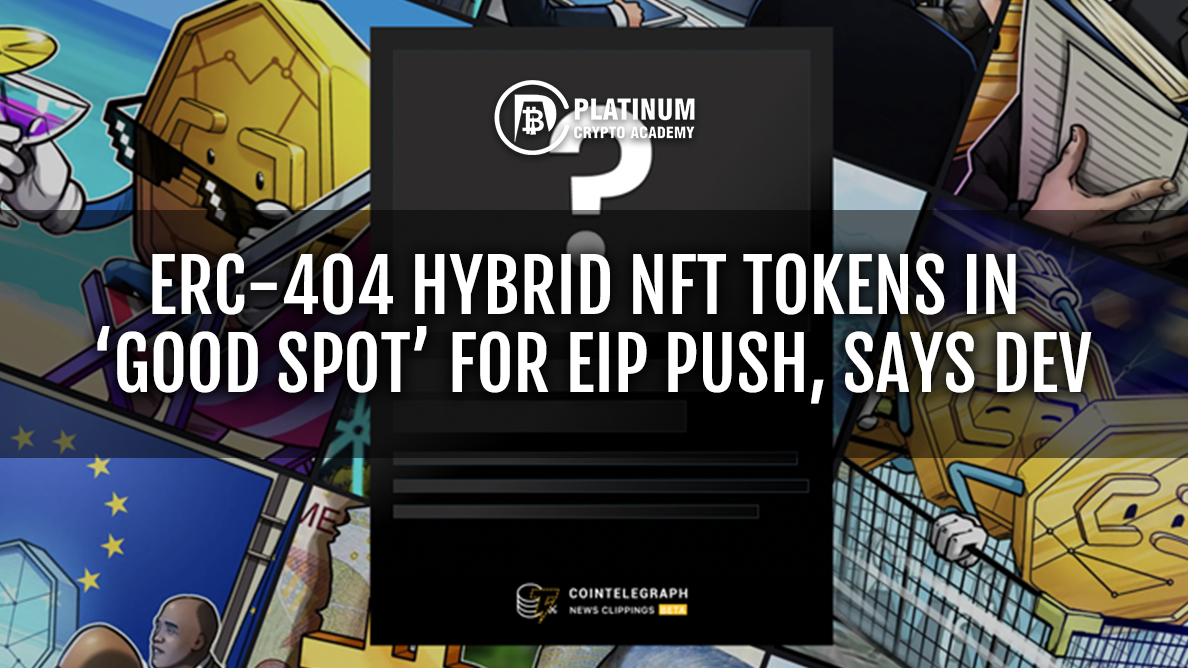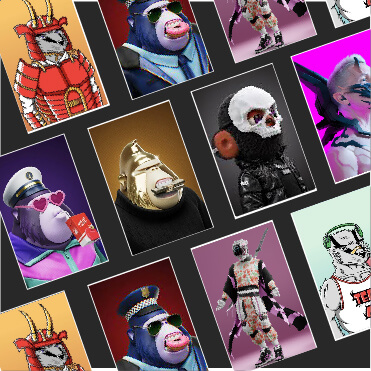An unofficial and experimental Ethereum standard, tentatively named “ERC-404,” is currently in development and aiming to merge the functionalities of fungible and non-fungible tokens (NFTs). The project is actively progressing towards submitting an Ethereum Improvement Proposal (EIP), as confirmed by one of its creators.
Crafted by developers operating under the aliases “ctrl” and “Acme” as part of the Pandora project, this innovative standard combines elements from both ERC-20 fungible tokens and ERC-721, the latter being commonly used for unique tokens like those found in the Bored Ape Yacht Club (BAYC) collection.
Despite its designation as ERC-404, it’s essential to note that the standard has not undergone formal auditing, and the “ERC” label is primarily nominal in nature.
In a conversation with Cointelegraph, ctrl, a developer involved in the creation of ERC-404, emphasized that obtaining approval for an Ethereum Improvement Proposal (EIP) is a process fraught with bureaucracy.
“It’s a lengthy process, there’s a lot of politics involved,” ctrl explained. “Usually, the process takes a couple of weeks.”
While remaining discreet about the specific individuals working on the proposal, ctrl hinted at their past success in similar endeavors, expressing confidence in their current progress towards submitting the EIP soon.
The objective of ERC-404 is to merge ERC-721 NFTs with ERC-20 tokens, thereby enabling the creation of what some refer to as fractionalized NFTs. These fractionalized NFTs would allow multiple wallet holders to collectively own a portion of a single NFT, such as those found in the Bored Ape Yacht Club (BAYC) collection. This fractional ownership would enable users to trade or stake their respective portions of the NFT for loans or other purposes.
According to the ERC-404 GitHub page, the standard is described as experimental, and the two standards it seeks to merge “are not designed to be mixed.” However, the project’s goal is to combine them in “as robust a manner as possible while minimizing tradeoffs.”
Despite this disclaimer, discussions persist regarding the safety of the project. A post shared on February 8 by a developer using the pseudonym “quit” raised concerns that NFTs utilizing the ERC-404 standard could potentially be susceptible to theft by ERC-404 tokenholders if deposited in a lending protocol that is not configured correctly for ERC-404.
The developer argued that a misconfigured protocol might fail to distinguish between an ERC-404 NFT and ERC-404 tokens, potentially enabling token depositors to withdraw an NFT they do not rightfully own.
8/ Now, remember how Pandora uses the max token ID to determine what kind of transfer to execute.
Also remember that depositor 2 has 1*10^18 tokens to available to withdraw.
Let's withdraw some of those tokens. Not all, but just a small fraction…like maybe 38,916 of them. pic.twitter.com/iffHJEDyS0
— Quit (@0xQuit) February 8, 2024
Ctrl dismissed the concerns raised in the post during an interview with Cointelegraph, asserting that quit “created a contract that improperly utilizes ERC-404,” thereby introducing a vulnerability.
“That’s akin to me sharing a photo of a car and detailing how I could break into it because the door is unlocked,” Ctrl remarked.
Crypto wallets from exchanges Binance and OKX have declared their support for ERC-404. Ctrl added that if quit’s apprehension was legitimate, “something would have already been exploited.” He stated that Pandora is currently undergoing an audit for a “more refined version of the standard that addresses integration.”
The first ERC-404 token, Pandora, was launched on February 5 by the project and has experienced a surge of over 1,850% in value within four days, boasting a market capitalization nearing $293 million, as reported by CoinGecko.
CoinGecko lists 12 additional projects that have debuted using ERC-404. Among them is a frog-themed replica of the DeGods NFT collection, which has accumulated a market capitalization nearing $30 million. Another project involves a collection of NFT pet rocks based on ERC-404.



